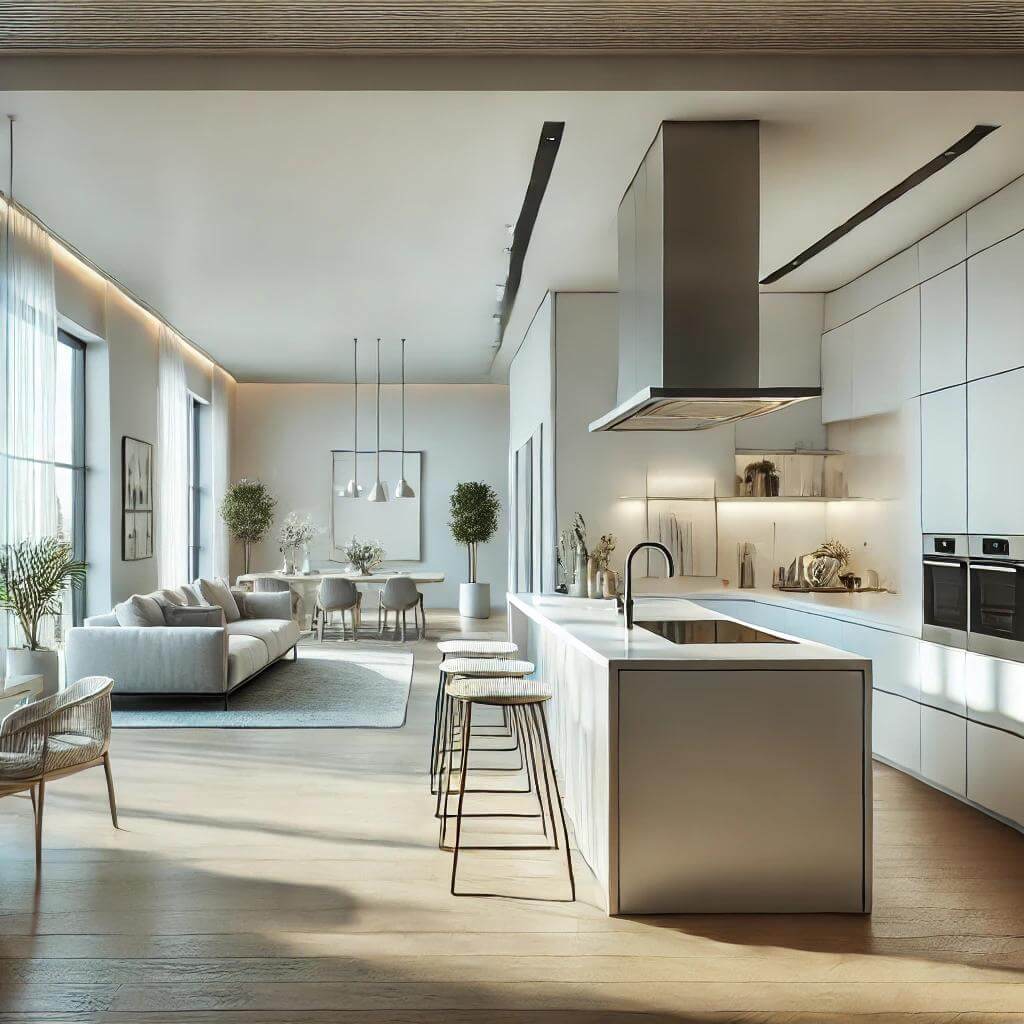While the kitchen used to be primarily a purely functional room – intended for the housewife – today it has developed into a central place for socializing. In modern living concepts in particular, however, the question still arises: should the kitchen be open or separate?
To say it straight away: both options have their advantages and disadvantages, which is why both variants are sometimes found in large houses or apartments today – the open kitchen for its communication and sense of space, the closed kitchen (also known as the dirty kitchen) for its tranquillity and functionality.
We have summarized the most important advantages and disadvantages of both variants for you:
Advantages of an open kitchen:
1. more space and light: removing walls creates a generous sense of space that seamlessly connects the kitchen, dining room and living room.
This creates a feeling of spaciousness and openness, especially in smaller apartments.
Daylight can flow unhindered through the entire living area, creating a friendly and bright atmosphere.
2. social interaction: An open kitchen allows the host to interact with their guests while cooking.
No more isolated work behind closed doors – cooking becomes a communal experience where communication and conviviality take center stage.
3. modern living aesthetics: The open floor plan is the hallmark of modern living.
It can be wonderfully combined with minimalist or industrial furnishing styles.
Freestanding kitchen islands and high-quality appliances take center stage and become design elements.

Disadvantages of an open kitchen:
1. noise level and odors: Without the protective barrier of a wall, cooking smells and noises spread unhindered throughout the entire living area, meaning that you will still remember a schnitzel the next day, for example…
Modern extractor hoods and quiet kitchen appliances can help, but not every home is ideally suited to this technology.
2. tidiness and cleanliness: Everything is visible in an open kitchen.
This means that untidy work surfaces or dishes that have not been washed are directly in view and can disrupt the overall appearance of the living space.
Choosing an open-plan kitchen therefore requires a high degree of tidiness and discipline in order to always leave a tidy impression.
3. loss of opportunities to retreat: The open space encourages sociability, but can also restrict privacy.
If you are looking for peace and quiet in between meals or want to concentrate on your work in the kitchen, you may not find the necessary privacy in an open-plan kitchen.
Advantages of a separate kitchen:

1. peace and quiet and concentration: A closed door ensures that you can cook in peace without being disturbed by the rest of the household.
Noises and smells remain in the room and do not penetrate into the living area.
2. creative freedom: In a separate kitchen, it is easier to cook experimentally or work with different preparation methods without having to consider the reaction of guests.
The mess after cooking can also disappear behind closed doors until it’s time to tidy up.
3. clear demarcation of rooms: Separate kitchens offer the opportunity to make the rest of the living space independent in terms of design and atmosphere.
While the kitchen area remains functional, the living area can radiate a completely different mood that is geared towards relaxation and recreation.
Which solution is right for you?
The decision between an open and separate kitchen ultimately depends on your individual needs and living habits.
If you value an open, communicative atmosphere in which you remain part of the action, an open kitchen will be the right choice for you.
However, if you value privacy and a clear separation between the functions of the rooms, a separate kitchen might suit you better.
Incidentally, combined solutions such as semi-open kitchens or kitchens with sliding doors offer an interesting compromise.
They allow flexibility by enabling both openness and separation – depending on requirements.

Related posts:
Tidiness in the kitchen: how to make the kitchen a feel-good place













